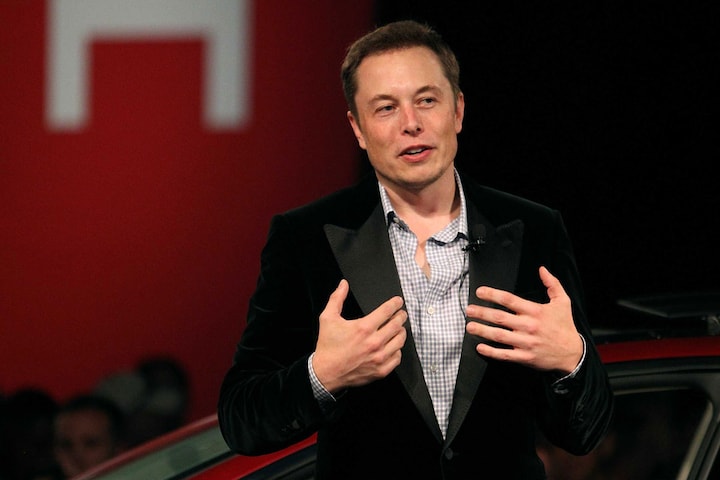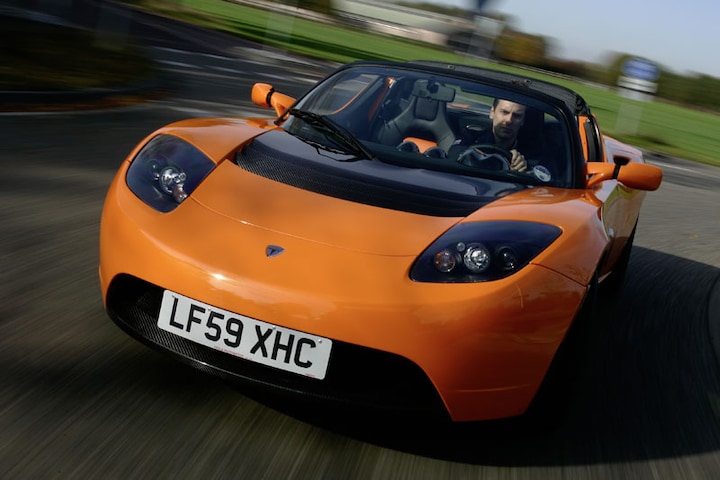From cowboy to world leader


Which car brand has had the greatest impact on the automotive world as a whole? There are certainly several contenders, but in modern times the answer has to be “Tesla.” The revolutionary American EV builder was founded in July 2003 and is therefore twenty years old this month.
“Tesla shook us up. Without that brand, we wouldn’t have come up with an electric car,” said (at the time) Audi CEO Bram Schot at the introduction of the E-Tron in 2018. Quite special, because we don’t often see the CEO of a certain car brand giving a competitor so much credit. At Tesla, manufacturers simply cannot ignore it, because no one can deny that Tesla has brought about a huge revolution in the car world. more of a tech company than a car manufacturer at the very beginning, which apparently means that Tesla’s people think very differently from traditional car manufacturers.From the way the company introduces cars to the operating concept, and from creating its own charging network from the ground up to building a family car with gullwing doors, things are happening at Tesla that we previously thought impossible.
Eberhard and Tarpenning
When you think of Tesla, you naturally think of the visionary who made all this possible: Elon Musk. Yet Musk is not the one who invented Tesla. That honor goes to the two Martin Eberhard and Marc Tarpenning, who went to the American Chamber of Commerce in July 2003 to register ‘Tesla Motors’. Musk came around the corner quickly, namely at the beginning of 2004, and can even officially call himself ‘Co-Founder’. His role at Tesla was initially “largest shareholder,” but in 2008 he became the company’s third CEO after Eberhard and Ze’ev Drori. Eberhard and Tarpenning left the company, reportedly not with enthusiasm.

Although Musk is not the one who invented Tesla, everything indicates that in addition to money, he also injected a good dose of vision and guts into the company. After all, whatever you think of the man, there has never been a lack of those two ingredients. From the very beginning, it was intended that Tesla would unleash the electric revolution, because Silicon Valley apparently believed that the revolution would not come under the rule of the traditional brands. Tesla may have been right about that, because with cars such as the Mitsubishi i-MiEV and the first Nissan Leaf important, but also hesitant steps were taken. In the years since Tesla, many brands have made it very clear that they are not at all interested in the electric revolution, because of the loss of accumulated knowledge and head start, employment opportunities, or because they simply do not believe in mass electrification. We couldn’t really wish for clearer evidence for the idea that such a revolution would not have happened without a newcomer like Tesla.
Teslafication
Is Tesla sacred then? Certainly not. The brand has received a lot of criticism in the past 20 years, and often rightly so. A relative newcomer with many demonstrable strengths, Tesla was and is a brand that is much more nicked than other automakers. The initially sometimes somewhat disappointing build quality, the very minimalistic interiors, the poor service and the delivery of expensive cars from a party tent on a rainy harbor site: Tesla got away with it, but BMW and Toyota don’t have to try it all.
On the other hand, that cowboy behavior paid off a lot. The undersigned still remembers his own disbelief when the brand announced in 2012 that it would roll out its own fast charging network – the first in the world. Something like this would never get off the ground, certainly not from a new and still very small manufacturer, but it did. Cars without keys, cars without a start button, ridiculous acceleration figures, virtual fart cushions and ‘Autopilot’ are other consequences of a kind of guts that is often simply not accepted by other brands, often with very good arguments. We also include coming up with a model line-up that spells ‘SEXY’ together.
Now that Tesla has successfully figured out those innovations, they are often copied casually by others. For example, take a look at the Model 3-like dashboard of the Volvo EX30 or the ‘user interface’ and even the corporate identity of many Chinese newcomers. At the same time, this has also created a kind of dichotomy in the car world. There are brands that fully embrace the ‘Teslafication’ of this world and thus almost inevitably lose some of their own identity, but there are also manufacturers that stick to traditional values and often cannot keep up with the Teslas of this world when it comes to technology or electrical performance.
The first Tesla Roadster
Tesla’s first ‘Master Plan’ was presented under Musk in 2006. It read (translated as literally as possible) as follows:
- Build a sports car
- Use that money to develop an affordable car.
- Usage that money to develop an even more affordable car.
- In the meantime, come up with clean ways to generate energy.
Ambitious, especially since no car had been produced in 2006. That only started in 2008, with the first Tesla Roadster. Based on the images which we still like can find, that first production was as bland and amateurish as you can imagine, with a Musk walking through a handful of employees dressed in a polo. The Roadster itself was based on the Lotus Elise, although the idea for the concept partly came from AC Propulsion’s TZero. The first Tesla Roadster was delivered in the Netherlands in 2009. Presumably that was the 95-KBL-8, a license plate that still exists but has no valid MOT or insurance. This car shone in a video in 2010 that clearly shows where the electric car world stood in those days, because next to a Mitsubishi i-MiEV, the Tesla was very fast, very impressive and above all very cool.

From craft project to sales cannon
That Roadster has of course never become a sales gun, but that was never the intention. It was a hip gadget for ‘early adopters’, and the model certainly succeeded in that respect. With a price of one ton, it was indeed an expensive gadget, but then you got a lithium-ion battery of 53 kWh, a 0-100 time of 3.9 seconds and an NEDC range of 392 kilometers. After the Roadster, the Tesla Model S followed in 2012, which went a big step further in every respect. The car was much more ‘own’, much more ‘finished’, much more spacious and usable, less expensive and came even further on a full battery.
Where the car world could still see the Roadster as a fun experiment by a bunch of creatives, with the Model S it became really clear for the first time that Tesla was serious. Thanks to tax benefits, entrepreneurs in the Netherlands almost received money below the line, so the car was almost immediately very popular here. After the S, the strict order of the Master Plan was released for a while, because not the Model 3, but the larger and more expensive Model X followed. Where the X gave the family car wings, the 3 did so with Tesla’s sales figures. After solving very serious and long-standing production problems, the smallest and currently cheapest Tesla model became extremely popular. In that respect, he only has to acknowledge his superior in the EV field in the Tesla Model Y, the big brother of the 3. In 2022, Musk proclaimed that it would become the best-selling EV in the world. Ambitious? That is not too bad: in the Netherlands, Europe and even worldwide, the Model Y even went home with the title of ‘best-selling car’.
The feared end of Tesla’s lead and growth therefore does not seem to be in sight for the time being. Teslas continue to win comparison tests to this day, including at AutoWeek, mainly due to the combination of incredibly low power consumption, excellent fast charging performance and seamless cooperation with their own supercharger network. In many cases, the technological lead remains large and the price reductions that the brand has implemented in recent months play a major role in the popularity of the models. Nevertheless, it remains interesting to see how the car world will continue to develop in these turbulent times, and whether Tesla can maintain its leading role in a world full of even younger brands. At least until the next revolution, when maybe Tesla itself is an established, conservative and traditional car manufacturer.

.
– Thanks for information from Autoweek.nl







